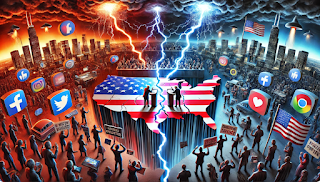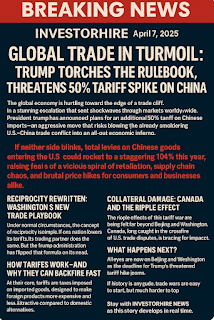InvestorHireNews
Published: April 9, 2025
By: Editorial Staff
Global AI Regulation Summit Erupts in Tensions: Nations and Tech Giants Clash Over Future of Artificial Intelligence
Geneva, Switzerland — What was intended as a collaborative step toward responsible AI governance has turned into a fiery debate at the 2025 Global AI Regulation Summit. World leaders, tech executives, and ethics experts gathered today in Geneva to address growing concerns over the unchecked expansion of artificial intelligence, but the event quickly escalated into a public showdown between competing visions for the future of the technology.
At the heart of the summit are urgent questions about the role of AI in spreading misinformation, automating jobs, and amplifying social divides. The stakes could not be higher: recent incidents involving AI-generated political propaganda and sophisticated deepfakes have rattled elections from Europe to South America, while fears over mass job displacement in industries like finance, healthcare, and logistics loom large.
Tech Titans Push Back
Elon Musk, CEO of Tesla and SpaceX, who joined virtually from Austin, Texas, argued fiercely against sweeping regulations. “We cannot strangle innovation with overregulation,” Musk warned. “AI is our best shot at solving humanity’s greatest challenges — from climate change to medical breakthroughs.”
Satya Nadella of Microsoft and Sundar Pichai of Alphabet, however, struck a more cautious tone, advocating for a balanced regulatory framework that prioritizes ethical deployment without stifling growth. “We must ensure that AI serves humanity, not just profits,” Nadella emphasized, receiving applause from several European delegates.
Governments Demand Accountability
The European Union led calls for stricter international oversight, proposing an enforceable AI Bill of Rights. European Commission President Ursula von der Leyen stressed, “We’ve seen what happens when regulation lags behind technology. We cannot afford to repeat the mistakes of the social media era.”
The U.S. delegation, split along partisan lines, reflected domestic tensions. Some lawmakers demanded clear accountability mechanisms for AI-driven misinformation campaigns, while others cautioned against restricting American tech companies' global competitiveness.
China, meanwhile, touted its state-controlled AI governance model as an example of effective regulation, though critics argue it comes at the cost of civil liberties.
Ethical Dilemmas in the Spotlight
Outside the negotiation halls, protesters filled the streets of Geneva, waving signs that read “Humans Over Algorithms” and “AI Needs Rules.” Advocacy groups demanded stronger protections against AI-driven bias and surveillance, while labor unions voiced concerns over accelerating job losses.
Tech ethicist Dr. Ayana Williams, speaking at a press conference, issued a stark warning: “Without enforceable guardrails, AI risks becoming the next wildfire of inequality. We must act now.”
What’s Next?
As the summit continues into the week, observers remain uncertain whether a meaningful consensus will emerge. What is clear, however, is that the conversation around AI regulation has shifted from theoretical to urgent. Markets are watching closely, with tech stocks experiencing volatility amid anticipation of potential policy shifts.
For investors and citizens alike, the outcome of this summit could shape the next decade of innovation, labor markets, and global power dynamics.
Stay with InvestorHireNews for continuing coverage of the Global AI Regulation Summit.










